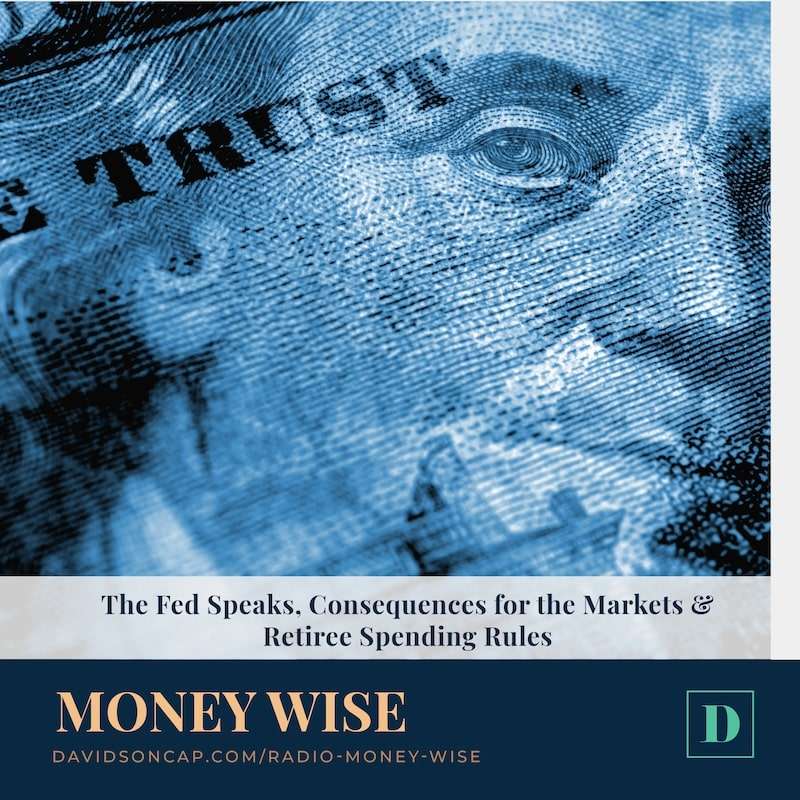Understanding this Key Concept Will Help You Grow and Preserve Your Capital
Anytime you’re making an investment, you face a trade-off between risk and return. Taking risks sometimes means you’ll be rewarded with returns, but only if your risk is properly managed. This starts with determining the appropriate level of risk for your portfolio, then calculating the existing risk in your portfolio and making sure it remains within your desired risk level.
If you can do these two things – know your risk and manage it – you can grow and preserve your capital. Below, we’ll discuss several ways portfolio risk can be calculated and managed.
How to Manage Portfolio Risk for Future Growth
The Basics: What is Investment Portfolio Risk?
Your portfolio risk is the combined risk of each individual investment within your portfolio. The various components in your portfolio and their weightings will impact how much exposure you have to various risks, like market and systemic risks, which we’ll discuss more below.
Knowing Your Risk Tolerance vs. Your Risk Capacity
Before you can construct the right portfolio for you, you need to determine how much you can afford to lose – both psychologically and financially. Typically, when people discuss risk tolerance in a portfolio, they define risk tolerance as the level of loss you’re able to handle depending on your financial situation and how close to retirement you are. However, that’s not necessarily correct.
When it comes to investment management, you need to think about both financial loss and psychological impact because money and emotions are deeply intertwined. A smart investor never wants to put themselves in a position where they lose enough capital that it causes them to begin making irrational decisions. This is where risk tolerance and risk capacity come into play.
Risk Capacity
When it comes to determining how much financial loss you can handle, we’re talking about risk capacity. Risk capacity is based on the amount of time an investor’s portfolio has to make up losses from downside moves in the market. It’s highly correlated to an investor’s age and when they plan to retire. Generally speaking, if you’re 20 or more years away from retirement and you have a reliable income and some cash saved, your risk capacity will be high. That’s because, in the event of a market crash, you would have substantial time for the market to recover and you wouldn’t need to draw income from your portfolio. On the other hand, if you’re close to retirement or your income stream is unstable, your risk capacity is low because losing money on your portfolio so close to retirement would likely result in you having to withdraw capital from an impaired portfolio.
Risk Tolerance
Risk tolerance is an investor’s personal aversion to risk based on emotional responses to market events. That is, the level of loss you’re able to handle from a combined financial and psychological standpoint. How you feel about your investments and where you’re at financially will change depending on your financial situation and life events. This means that during different points in your life you may have a higher risk tolerance than at other points in your life where you may be more worried about your investments doing well.
To successfully construct the right portfolio for you, you have to separate your risk tolerance from your risk capacity and understand that they may not always line up. The best way to determine your risk capacity and risk tolerance it is to work with a financial or investment advisor, but you can get a pretty good idea by considering your:
- Portfolio value
- Time horizon
- Monthly income
- Monthly expenses
- The reliability of your income
- Your temperament regarding loss
Ultimately, there’s a chance that your risk tolerance and your risk capacity won’t always be the same. For instance, say you love the stock market and the rush that comes from making daring trades and big investments – you would be considered as having a high-risk tolerance. However, your portfolio may not have the risk capacity to assume as much risk tolerance as you feel you can handle emotionally due to there not being enough time to make up any significant losses in your portfolio should something bad happen.
Understanding the difference between how much risk you can take on emotionally and how much risk you can take on logistically, and adjusting your tolerance to be more in line with your portfolio’s risk capacity is crucial to developing a strong portfolio and investment strategy.
Types of Risk in Your Portfolio
There are multiple types of investment risk at the portfolio level and at the individual security level. For individual securities, there are five types of risk that you can easily manage through diversification:
- Liquidity risk
- Default risk
- Regulatory/geopolitical
- Duration risk
- Style risk
There are also broader portfolio risks, which can be managed with more creative diversification, as well as other strategies.
Market Risk
This is, of course, the biggest risk facing any portfolio. It’s also sometimes called systemic risk. Here’s why: most of your assets correlate, meaning that a stock market correction or crash will result in most stocks falling. We see this play out when the majority of financial assets lose value during a bear market.
Inflation Risk
Why take on risk on your portfolio at all? Well, owning stocks is exactly what allows you to outperform inflation over the long term. If you have too little risk in your portfolio, your buying power won’t keep up with inflation.
SEE ALSO: Three Reasons to Stay in the Market – Even When it’s Volatile
Reinvestment Risk
This type of risk relates to the bond portion of your portfolio. If you purchase bonds when yields are high, you earn those high yields even if interest rates should fall. However, if yields are low when the bond matures, the principal can’t be reinvested at a high yield.
Concentration Risk
If your portfolio has too much exposure to specific industry sectors, regions, or asset classes, you create systemic risk for yourself in that all these correlated investments are impacted by the same economic forces.
Interest Rate Risk
This type of risk affects every investor’s portfolio, but an investment advisor can help you analyze your exposure.
Measuring Your Portfolio Risk
There are multiple approaches to measuring risk in your portfolio, none of which is fool proof. Typically, it’s best to combine several methods. Volatility is the most common, and it is usually measured using standard deviation. A financial advisor or investment advisor can help you first calculate your portfolio’s historical standard deviation, then determine expected volatility in the future using a mathematical calculation.
Other commonly used risk measurement tools are the Sharpe ratio, which is a measurement of a portfolio’s incremental risk taken vs. the reward provided by taking that incremental risk. A similar measure is the Sortino ratio, which specifically considers downside volatility. Finally, there is Beta, which can help you measure the risk of an individual security relative to the market. Beta can also be used to measure a diversified portfolio’s aggregate risk.
All of these calculations can be complex, so it’s best to work with a financial professional to get accurate measures for your portfolio.
Managing Your Risk
Once you understand your risk, you need to focus on managing it. Properly managed risk is needed in investor’s portfolios not only to help their nest egg outpace monetary inflation but also to give their portfolio capital appreciation opportunities to cover living expenses during their retirement years.
The first step is to be sure you are diversifying your investments across several industry groups and asset classes. For most portfolios, a substantial percentage should be invested in equities, yet balanced with other types of assets. A basic diversified portfolio includes stocks, bonds, and cash. Why? Well, stocks historically produce the greatest long-term returns, bonds provide the most predictable income/hedge stock market volatility, and cash allows for immediate liquidity. Taking the step of diversifying in this way is a significant improvement over a single-asset portfolio.
SEE ALSO: Investor Psychology: How Bias Can Lead to Poor Investment Decisions
It’s Time to Diversify Your Portfolio to Manage Your Risk
Risk is inherent in investing, and some investors stop at merely accepting that fact. The truth is, understanding the risk in your portfolio, identifying what amount you’re comfortable with, and then managing that risk appropriately are all keys to maximizing portfolio growth.
If you’d like to take an advantage of a portfolio review and analysis, please contact us today at our Corpus Christi office or our San Antonio office. At Davidson Capital Management, we are dedicated to educating our clients and offering transparent, goals-based, hands-on portfolio management. We would be happy to answer your questions about managing risk and maximizing your portfolio growth.




